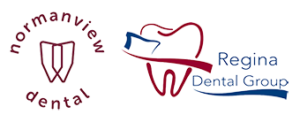How Dirty Is Your Toothbrush?
Did you know that the average toothbrush can contain more than 10 million bacteria, including E. coli and Staph? Did you also know that you can avoid the spread of those germs by regularly cleaning your toothbrush? It is recommended that you change your toothbrush or electric toothbrush head every three months or after you have been sick to avoid the spread of germs. However, cleaning your toothbrush regularly can remove other harmful bacteria that can potentially jeopardize your oral health. Now more than ever, it is crucially important to take appropriate safety measures and avoid the spread of germs and viruses. To help you keep your toothbrush germ-free, we have compiled a list of the safest and most effective ways you can clean your toothbrush (and keep it clean) at home.
Clean Your Toothbrush with Mouthwash
Soak your toothbrush in a cup of antibacterial mouthwash – mouthwash containing alcohol will kill off more of the bacteria. Stir the bristled end of your toothbrush or electric toothbrush head around for 30 seconds, this will loosen any food particles, hardened toothpaste or germs from the last use.
Clean Your Toothbrush with Baking Soda
Soak your toothbrush in a cup of water with 2 teaspoons of baking soda. Baking soda has antibacterial activity and has been found to kill bacteria that is a major contributor to tooth decay. However, baking soda may be ineffective against fighting salmonella, E. coli and Staph, and has been linked to destroying the oral microbiome, which many dental professionals deem counterproductive to achieving optimal oral health.
Clean Your Toothbrush with Vinegar
Although this biodegradable alternative cannot kill dangerous bacteria like Staph, vinegar can be an effective disinfectant against some bacteria and viruses, including the flu. Stir the bristled end of your toothbrush or electric toothbrush head in a cup of vinegar for 30 seconds to breakdown and remove food proteins, bacteria and hardened toothpaste.
Clean Your Toothbrush with Hydrogen Peroxide
Keep your toothbrush is a 3% Hydrogen Peroxide solution – mix 1 teaspoon of Hydrogen Peroxide in 1 cup of water. Make sure that you use enough solution to cover the head of the toothbrush and change the solution daily for an effective clean. Remember, Hydrogen Peroxide has antimicrobial properties but can be harmful and should only be used at concentrations lower than 3% to disinfect.
Clean Your Toothbrush with Denture Cleaner
Sanitize your toothbrush or electric toothbrush head by soaking it in a cup of water with a denture cleaner tablet. These antibacterial cleaning products work by breaking down food protein and bacteria deposits, and loosening particles stuck between the bristles. These cleansers are formulated for oral use, so this is a safer disinfectant option if you are wary about using Hydrogen Peroxide or other solutions.
Clean Your Toothbrush in Your Dishwasher
Disinfect your toothbrush by putting it in your dishwasher either with your utensils or on the top rack. If you are using an electric toothbrush and wish to clean your toothbrush head in the dishwasher, place it in a dishwasher-safe case to ensure their stability during the cycle.
Tips to Keep Your Toothbrush Clean
- Wash your hands with soap before and after touching your toothbrush. This is a safe way to avoid potentially spreading anything to or from your mouth.
- Rinse your toothbrush before and after every use by holding it under hot water. This will soften the bristles and release any particles from the last use.
- Store your toothbrush inches away from other toothbrushes. Shared toothbrush holders are often too small for safe storing.
- Keep your toothbrush far away from the toilet and always flush the toilet with the top lid down, to minimize the spread of airborne bacteria particles.
- Air dry your toothbrush by shaking the excess water from the bristles and storing it upright. Storing your toothbrush head down places the bristles in residue at the bottom of the toothbrush holder and allows for bacteria from the handle to drip down onto the bristles.
- Clean your toothbrush holder regularly using soap and water or any of the recommended toothbrush cleaning techniques above.
- Hold your toothbrush away from the tip of your toothpaste tube or pump to reduce the chances of cross-contaminating your toothbrush or toothpaste.
- Only place a toothbrush cover or protector on a dry toothbrush to safeguard from airborne or hand-held germs.
Brushing your teeth for two minutes, twice a day is very important. The cleanliness of your toothbrush is equally important when it comes to the quality of brush your smile is getting. To maintain optimal oral health at home during the COVID-19 pandemic, be sure to clean your teeth with a fresh, soft-bristled toothbrush every day.
If you would like to learn more, please do not hesitate to give us a call or contact us to book an appointment.
